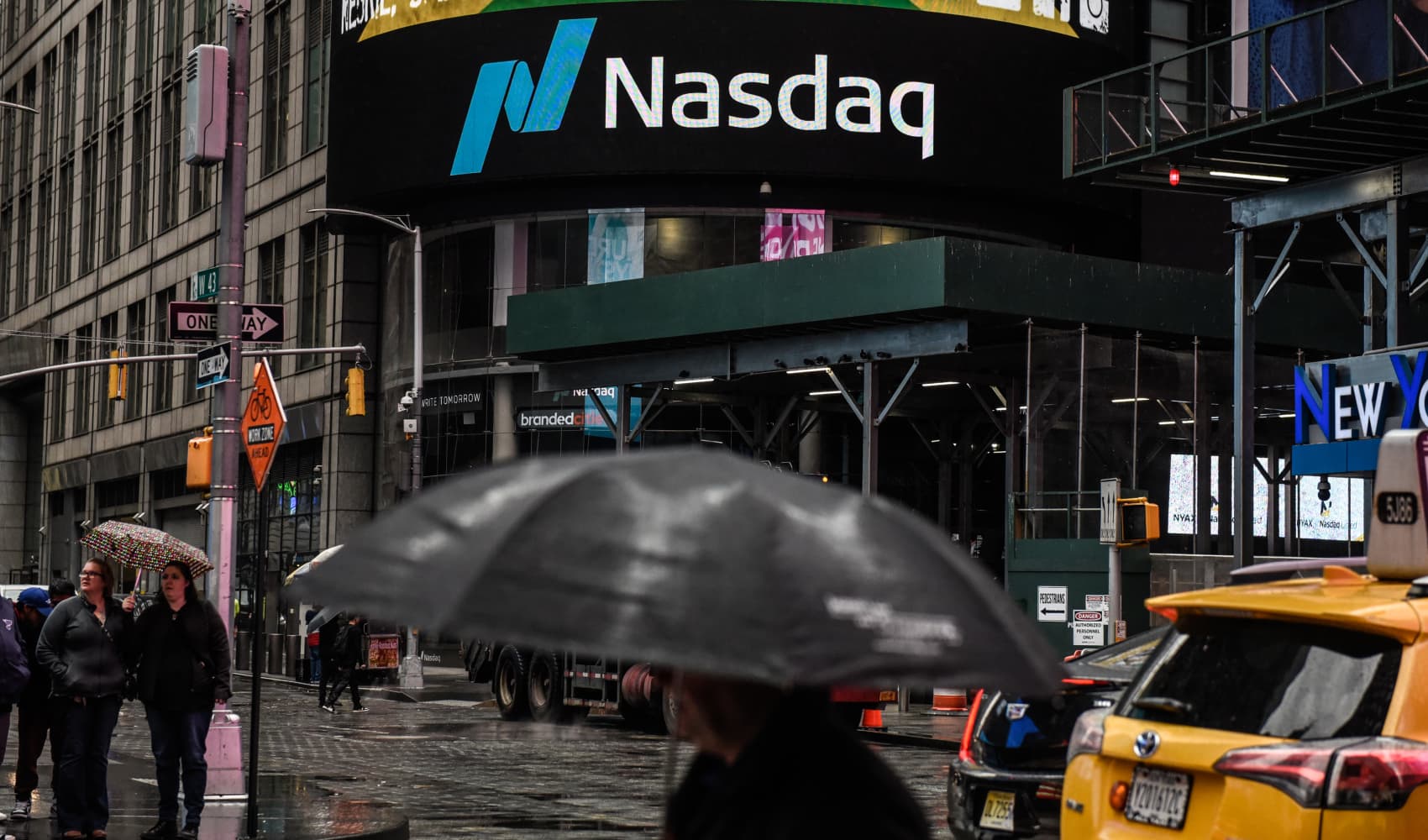
- China's yearslong effort to develop robotaxis is starting to gain traction with consumers —but it's also rattling taxi drivers worried about losing their jobs as a result of increasing competition.
- Baidu's robotaxi unit Apollo Go became one of the top 10 trending hashtags on social media platform Weibo on Wednesday amid reports of rapid user adoption in Wuhan city, where the company began operating fully staffless vehicles in certain districts 24/7 in March.
- China had more than 7 million registered ride-hailing drivers as of the end of May, roughly twice as many versus the 3.51 million drivers reported for July 2021, according to the Ministry of Transport.
BEIJING — China's yearslong effort to develop robotaxis is starting to gain traction with consumers — but it's also rattling taxi drivers worried about losing their jobs as a result of increasing competition.
Just as GM's Cruise and Alphabet's Waymo have rolled out driverless taxis in San Francisco and Phoenix, Arizona, local Chinese governments from Beijing to Guangzhou have allowed domestic players to operate robotaxi rides for the public.
This week, the rising prominence of robotaxis in China began trending on social media.
329 medal events. 32 sports. Endless drama. Catch all the action at the Paris Olympics. Sign up for our free Olympics Headlines newsletter.
As of Thursday morning, videos about fully autonomous driving taxi experiences were the 12th most popular topic on Douyin, Bytedance's China version of TikTok.
Baidu's robotaxi unit Apollo Go became one of the top 10 trending hashtags on social media platform Weibo on Wednesday following reports of rapid user adoption in Wuhan city.
The company began operating fully driverless vehicles in certain districts of Wuhan, 24/7 in March.
Money Report
Wuhan is the largest operational region for Baidu's Apollo Go, one of the largest robotaxi operators in China. The company has more than 500 robotaxis operating in the city and plans to increase that to 1,000 by the end of the year.
When contacted by CNBC, Baidu had no official updates to share.
The increased attention on robotaxis comes as major Chinese cities ramp up support, while smaller cities restricted ride-hailing apps in the last few months.
Top social media posts on Wednesday were quick to extrapolate from Wuhan's robotaxi tests, predicting an impending nationwide rollout and spawning hashtags like: "Are driverless ride-hailing cars stealing people's rice bowls." That's according to a CNBC translation of the Chinese.
Also making the rounds on social media was an appeal in late June by a taxi company in Wuhan seeking reduced taxes and more restrictions on Apollo Go robotaxis as well as the number of ride-hailing cars.
CNBC was unable to independently verify the document, which claimed the taxi company had to stop operating four of its 159-car fleet since April due to falling income.
Wage growth in China overall has slowed from around 10% annual increases prior to the pandemic, to 4% in recent years, according to Goldman Sachs analysis published last month. The pace improved to 5.6% year-on-year growth in the first quarter, the report said.
Ride-hailing drivers on the rise
A surge of new companies and ride-hailing drivers have meanwhile prompted some local governments to restrict the industry.
The city of Guyuan in Ningxia autonomous region announced that as of May 12, it was suspending online ride-hailing businesses.
"Our city's taxi market is already saturated," the announcement said in Chinese, translated by CNBC.
Separately, the southwestern city of Guiyang had suspended new ride-hailing licenses for half a year through June. The announcement said authorities were able to remove some non-compliant ride-hailing businesses and cars.
China had more than 7 million registered ride-hailing drivers as of the end of May, according to the Ministry of Transport.
That's roughly twice as many versus the 3.51 million drivers reported for July 2021, and 570,000 more drivers than the ministry reported as of November.
In comparison, the U.S. had nearly 400,000 taxi and ride-hailing drivers, shuttle drivers and chauffeurs in 2022, according to the latest available figures from the Bureau of Labor Statistics.
The number of ride-hailing companies in China has also climbed, from 241 in 2021 to 351 in May this year, according to the Ministry of Transport.
China pushes ahead with robotaxi support
Multiple Chinese ministries in January released a plan to promote cloud-connected cars, including tests of at least 200 low-speed unmanned vehicles in each pilot region. Last week, the same authorities released a list of 20 initial pilot cities, including Beijing, Shanghai, Chongqing and Wuhan.
Those cities have already allowed robotaxi operators to test cars in suburban areas.
Beijing city in November 2021 started to allow Baidu's Apollo Go and startup Pony.ai to collect fares from the public for rides with a safety driver inside the robotaxis.
Last year, Beijing city let the operators remove all staff from a few of the vehicles. The city last month released draft rules that put the responsibility of a robotaxi traffic violation on the car owner and manager if there is no driver.
The public-facing rides are currently subsidized, and the number of vehicles on the road are still far lower than those of traditional taxis.
The Apollo Go app showed Thursday that a 45-minute robotaxi ride from Daxing airport to a southern suburb of Beijing would be fully subsidized – the entire 193.84 yuan ($26.66) cost was waived. The app also showed a 16-minute robotaxi ride within that Beijing suburb would cost 10.36 yuan, about half the 20 yuan fare listed by ride-hailing apps, which can call taxis.
Baidu CEO Robin Li told investors in May that more than 70% of Apollo Go robotaxi rides in April were fully driverless, with no human staff inside. He predicted that share would reach 100% in the coming quarters — and allow Apollo Go to break even in Wuhan first.
The city is the capital of Hubei province, which proclaimed in a June 1 article its efforts to become the world's first autonomous driving city.
"I just got my driver's license ... and there's already driverless cars? What was the point of me taking the test?" according to a Chinese comment on the article, translated by CNBC.
"In the short term, there's no way autonomous driving can replace drivers," the Hubei government account said in its reply.






